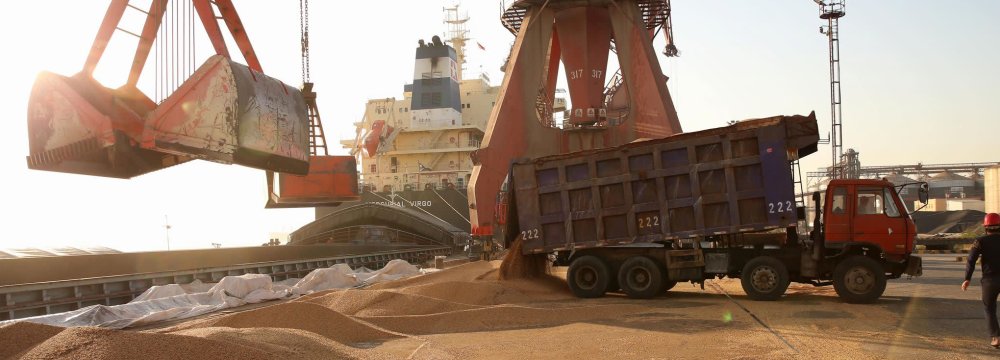GTC, affiliated with the Agriculture Ministry, is in charge of ensuring adequate supply of basic goods, including wheat, rice, cooking oil, sugar and meat, to the local market.
Iran has imported a total of 96.48 million tons of wheat worth more than $22.84 billion over the past 30 years, spokesperson of the Islamic Republic of Iran Customs Administration said recently.
The highest volume of imports were registered in the fiscal 2014-15 with 7.43 million tons and 2021-22 with 7.07 million tons, Rouhollah Latifi was also quoted as saying by ILNA.
Latifi noted that the lowest volume was registered in the fiscal 2018-19 with only 360 tons.
Privates Sectors Makes Foray Into Imports
The private sector has been allowed to place orders for wheat imports as of Aug. 23 by the government after seven years, according to the head of the Agriculture and Food Processing Commission of Tehran Chamber of Commerce, Industries, Mines and Agriculture.
“In a meeting with first vice president around three months ago, we made our request for the private sector to be allowed to be active in the field of wheat imports. Fortunately, our request was accepted and later the government’s Economic Council agreed to give us the permit. Now a directive allowing private businesses to import different types of wheat has been communicated to provinces across the country,” Kaveh Zargaran was also quoted as saying by the news portal of TCCIM.
The official noted that every year, domestic wheat harvest comes to an end in September, so imports of the grain cannot hurt local farmers at this time.
Need for 7m Tons of Imports
Iran will need to import at least 7 million tons of wheat in the year to March 2023, marking a second year of high imports as drought continues to affect domestic production, Zargaran said in May.
He made the forecast in a conference presentation, extracts of which were passed to Reuters by his office.
Iran's Grain Union estimates that the country imported a record 8 million tons of wheat in the previous year ending March 2022, Zargaran's office said.
Iran's domestic wheat output can vary widely, depending on rainfall, and the country has in some years been self-sufficient in the staple cereal. It is among countries in the Middle East to have suffered from drought in the past year, increasing the import burden on states at a time of rising world prices.
Importers are now facing additional difficulties as the ongoing Russia-Ukraine conflict has disrupted Black Sea grain shipments.
Iran also faces the challenge of financing imports in the face of US sanctions, which it is aiming to get lifted through negotiations to revive an accord on its nuclear program.
The projected wheat imports in the year ahead would contribute to total estimated Iranian imports of 25 million tons in grains, meal and oilseeds, Zargaran added in his presentation.
Local Purchases at 7.5m Tons
The Iranian government has purchased 7.15 million tons of wheat worth 827.86 trillion rials ($2.6 billion) from local farmers from the beginning of the harvest season on March 24 to Sept. 14, registering a 58% rise in tonnage compared with the similar period of last year, the CEO of the Government Trading Corporation said earlier this week.
“The value of this year’s purchases exceeds that of the years between 2017 and 2021, which stood at an aggregate of 812.03 trillion rials [$2.55 billion],” Saeed Rad was also quoted as saying by ILNA.
This year, guaranteed purchases started from the provinces of Sistan-Baluchestan, Kerman and Khuzestan — all in southern Iran.
According to Rad, the government bought around 4.52 million tons of the grain in the last Iranian year (March 2021-22).


